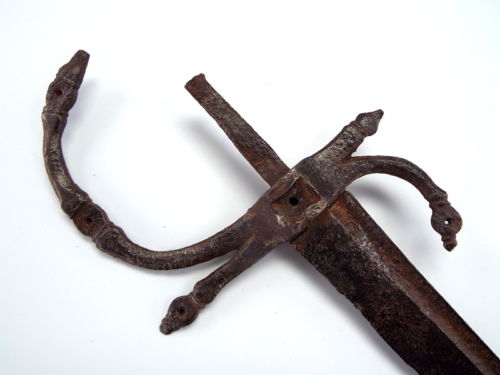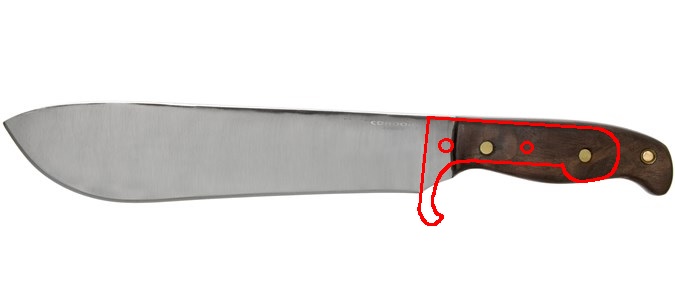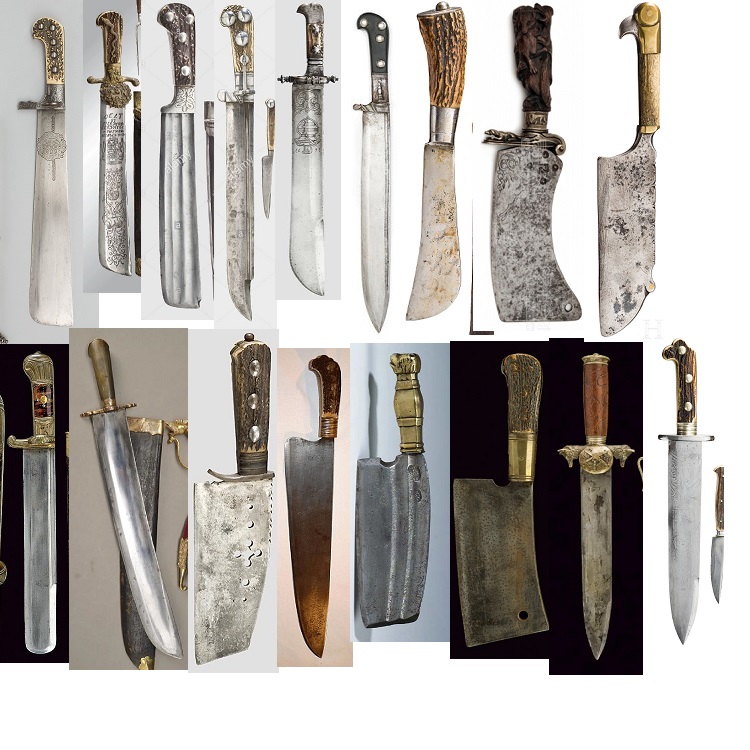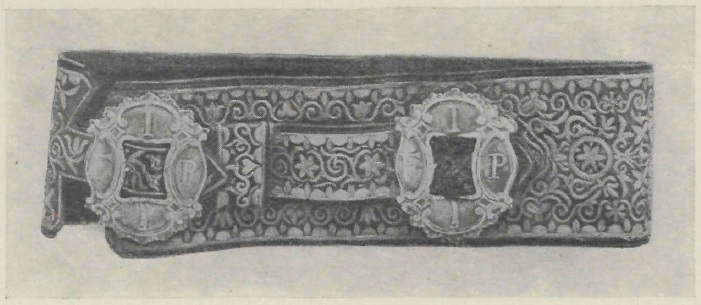Hi again. Well, this is going in a somewhat different direction. I've decided to furnish the set with oak grips and steel hardware, which looks to be working out much easier; I took Radovan's recommendation of using furniture tack heads for the washers, and yesterday I stumbled across
Lukas' rugger WIP thread which gives a clear idea of how to assemble the bolsters and side ring rivet without the ring being able to rotate in its pin hole after it's peened. I'm giving up on finding an awl -- though if I ever do stumble across one, incorporating it would only require a rebuild of the cleaver scabbard. And I'll be reusing the original knife for some other project. I did find a much nicer one, though.
[ Linked Image ]
(The lighter-colored areas of the grips are where I sanded them to fit perfectly flush with the tang edges and then had to re-round them. They'll look better once varnished.)
Recently I started to think I'd like a matching sword, like in this set:
https://collections.royalarmouries.org/object/rac-object-151
There don't seem to be any off-the-shelf blades available with a slab tang like the trousse components have, but I did find a historical example that appears to have had a hidden tang (see attached). I'd been thinking of rehilting a
Deepeeka English half-basket hanger as the originals all seem to have had straight blades and the narrow fuller and needle point are within the range of historical examples, but then the question is whether the hilt will be a convincing match with the rest of the set without attempting complicated frame-handle construction.
With a hidden tang the washers would be purely decorative, except in the unlikely case that the tang is wide enough to drill pin holes through. In the absence of pin holes, I would have to leave the shanks on the tacks, shorten them and reshape the points, which would be tedious, and they won't have the mechanical security of a rivet peened over them at both ends.
 Attachment: 19.34 KB
Attachment: 19.34 KB

Was once on eBay, I have no idea how long ago nor whether there were any other pics available.





